|
|
[Search
Tip: Use " " for better search results ex. "John Q. Doe";
"City of ..."]
|
|
Robert
M. Bettinson
|
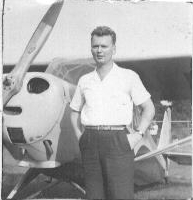 |
|
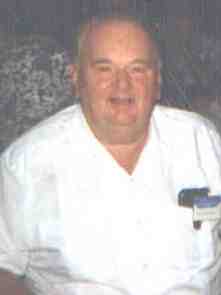 |
| 1946 |
|
1991
Reunion |
|
Training
|
|
MOS
|
Course
|
Location
|
|
1942-43
CPTP
|
Pilot
Training |
Philadelphia,
PA |
|
525
|
Basic
Training - May 1943 |
Atlantic
City, NJ |
|
747
|
Airplane
Mechanic |
Goldsboro,
NC |
|
685
|
Aircraft
Electricial Specialist |
Rantoul,
IL |
|
611
|
Gunnery
School |
Harlington,
TX |
|
748
|
Flight
Engineering |
Harlington,
TX |
|
With LTC. Robert
Bettinson's entrance into the Army Air Force during April,
1943 at Camp Boardwalk, Atlantic City, NJ, being stationed
at the President Hotel on the boardwalk gave him many
off-duty hours of participation with Coastal Base # 1
at Bader Airfield, NJ, two city blocks from the President
Hotel.
Then Pvt. Robert
Bettinson served Coastal Base # 1 wherever needed: in
communication, operations or as an observer. Capt. Wynn
Parr was Base # 1 Commander. He was concerned with his
flight crews flying submarine patrol while escorting cargo
ships and oil tankers up along the coast. Low altitude
flying to obtain some accuracy in bombing a target and
escaping safely from the concussion of a blast and being
sure a bomb would not be wasted by missing its target,
were some of Capt. Farr's concerns.
Discussions of
ideas for a bombsight followed and Pvt. Bettinson, AAF
came up with the idea of using a soup can. With permission
to use the maintenance workshop at the President Hotel,
and some used soup cans, the "Campbell Noodle Soup can
bombsight” was born. Crude as it was, flight crew training
in its use proved near-accuracy of up to eighteen hundred
feet (1,800 ft.), a safety get-away margin from an exploding
bomb or a German submarine. With aircraft carrying a 100
pound bomb usually at altitudes of five hundred feet and
lower, a more sophisticated bombsight came into play shortly
after the soup can bombsight, also designed and built
by Pvt. Bettinson, AAF for Coastal Base # 1's use at higher
altitudes. These units, little known by most members,
were kept in guarded possession of Capt. Wynn Farr. After
operations were suspended at Base # 1, two of the three
units built by Pvt. Bettinson, AAF, the original "Campbell
Noodle Soup can bombsight" was left with Capt. Wynn Farr
as a keepsake. The "Bettinson Bombsight", which
looked like a sling shot with an adjustable left/right
wind drift "T" bar and an azimuth rod, was placed in the
custody of Commander Joseph Sirncock, U.S.N., Philadelphia
Naval Supply Depot.
|
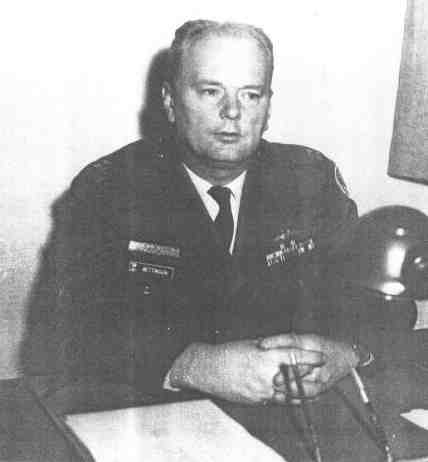 |
| Robert
M. Bettinson -Lt. Col (Ret)- Civil Air Patrol
One of the
original founders of the Massachusetts Wing
|
|
|
Having
begun a career in aviation with the Civil Air Reserves,
in radio communications and cadet flying school at Kelly-King
field in East Taunton, Massachusetts, under the command
of Lieutenant Allison MacComber, USAAC during 1940 and
1941. On January I enlisted into the Civil air Patrol
programs and also the military CPTP to train as a liaison
pilot at the Boulevard Flight School which was located
across Route 1 from the old Naval Air Base on the corner
of Red Lion road. Today it is known as Philadelphia Northeast
Airport or may have changed to North Philadelphia airport.
About
May 1943, I was shipped to Atlantic City, New Jersey for
basic training. On weekends, Coastal Air Patrol personnel
of the Civil Air Patrol were in need of training as over
water pilots, aircraft and submarine identification and
the use of the Campbell Soup Can Bombsite and a second
bombsite. This looked like a slingshot, with a "T" bar
for Left/Right drift and an Azimuths rod for altitude
drop. These two bombsites are now in the Taunton Historical
museum, Taunton Massachusetts. One hundred-pound bombs
were used on German U-boats and small dye bombs that left
a silver dye trailing a diving U-boat until a Coast Guard
ship could move into the area.
Later
I was sent to Seymour Johnson Field at Goldsboro, North
Carolina to train in engine maintenance and onto Chantue
Field at Rantoul Illinois for specializing in B-29 electrical
systems and the use of Selsyn motors in systems control.
Having
had flight training in the Douglas Dauntles as a co-pilot
and gunner always looking beyond my rudder. The C-45 was
always my favorite aircraft and with one bad habit, a
crack in the wing spar would break and the wing would
fold up over the fuselage and we all know what happens.
I
next went to Camp Spring, Maryland, outside of Washington
D.C. for additional training then to Harlington, Texas
for flight engineer and gunners training. Then to Wichita,
Kansas then Colorado Springs, Colorado and finally to
North Field on Guam early 1945 in the Marianas with an
assignment to the 39th Bomb Group. Having received flak
in the head from my first mission to Kobe sometime in
June 1945. Apparently, flak had hit me in the head. That
was the last thing I remembered. I woke up five or six
days later not remembering anything about the flight.
A few days later a gentleman came and said he was pilot
Ed Arvin. Later, I was assigned to Wing Headquarters and
presented the Air Medal and Purple Heart before being
sent to Camp Anza California, then to Fort Devens, Massachusetts
for an Honorable Discharge.
I
believe in 1998 while at a civil war re-enactment with
the 18th Regiment Massachusetts Volunteers, blood starting
flowing from my WWII head wound. It took about fifty plus
years before it emerged loosely from the skull.
I
will always be thankful to the boys who took care of me
while unconscious on the B-29 aircraft and getting me
to the field hospital in time.
Thanks
again, "Bob" Bettinson Lt. Col. Retired
|
|
"Captain
of the Calvary"
Captain/Chaplain
18th Mass.Volunteers
(re-enactment group)
Captain/Chaplain
11th Mass. Volunteers Ceremonial unit who show their
pride on Memorial Day and on other such occasions honoring
those of Civil War and other wars...
Captain/Chaplain
of Union/Confederates Veterans, a group of indivdual
re-enactors joined together to futher the interest and
provide instruction to those interested in pursuing
the hobby of Civil War reenactment
|
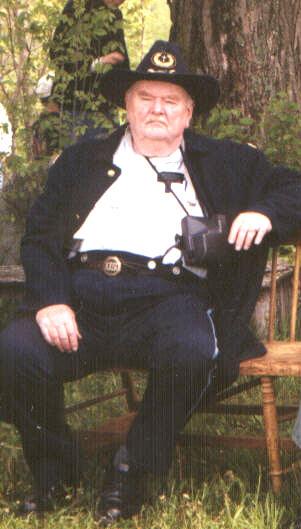
|
| Danielle
Green, granddaughter of Robert M. Bettinson, notified
us that her grandfather took his final flight on 30
May 2006. |
62nd
Squadron Crew Index
|
|

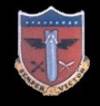

![purplhrt.gif [The Purple Heart]](../../images/medals/purplhrt.gif)
![apcm.jpg [The Asiatic-Pacfic Campaign Medal]](../../images/medals/apcm.jpg)
![wwiivic.gif [The Victory Medal, World War II]](../../images/medals/wwiivic.gif)



![purplhrt.gif [The Purple Heart]](../../images/medals/purplhrt.gif)
![apcm.jpg [The Asiatic-Pacfic Campaign Medal]](../../images/medals/apcm.jpg)
![wwiivic.gif [The Victory Medal, World War II]](../../images/medals/wwiivic.gif)